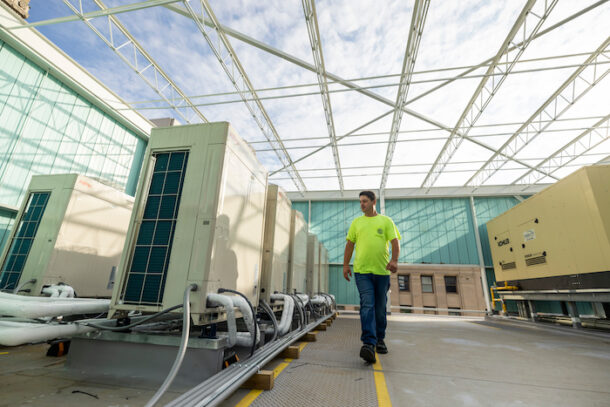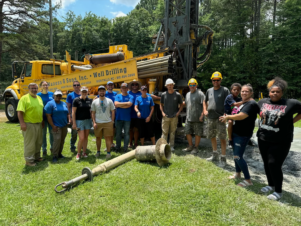Commercial buildings take a great share of the construction market. Alongside with residential buildings, commercial premises are regularly built to provide companies, enterprises, and businesses with comfortable settlements. However, the construction of commercial and residential differs and has specifics.
Workflow comfort directly influences employee performance and, consequently, the success of a business running. The creation of optimal conditions affects workflow efficiency and employee productivity. Thus, strict requirements are set for commercial premises. Owners and landlords must comply with them to prevent violation of working conditions.

Types of Commercial Buildings
To consider obligatory requirements it’s necessary to realize what kinds of commercial premises exist. There are several types of commercial real estate:
- offices
- retail premises
- production facilities
- warehouse facilities
- apartments and hotels
- garages and parking lots
Requirements for Commercial Buildings
Depending on the type of rooms, different requirements are set. However, two main factors are applicable to all sorts of buildings, namely:
- environmental factors
- utilities
The difference is only in the required terms. For example, for offices, hotels, retail spaces, and crowded places, it’s essential to create and maintain a comfortable indoor climate, that is, an optimal temperature and humidity. For warehouses and industrial facilities, high barrier properties against environmental aggressors are the key criterion.
How to Pick the Best Commercial Real Estate?
The list of criteria for commercial premises depends on the type of business.
To find the most suitable option, companies select buildings based on the following parameters:
- Location. Choose your location based on your goal. Will customers attend premises? Then, walking distance and availability of parking spaces nearby are important. Are you opening a warehouse? Look for a location from which it will be convenient to get to different parts of the city. Don’t forget to assess upcoming changes in city infrastructure.
- Technical characteristics of the building. In addition to the location, pay attention to the technical aspects of the room: the availability of the necessary telecommunications and utilities (water, electricity, etc.). Assess ceiling height, noise level, lighting, ventilation, and the ability to organize a loading and unloading area. Imagine how you will use the space and check whether it is feasible in the conditions of a particular room.
- Square area. This parameter depends on the size of the company and the type of business. Small businesses usually rent commercial real estate with an area of up to 100 square meters because such enterprises have a limited budget and do not need large areas. The most popular locations for small businesses are residential areas of large cities, where most of the population is concentrated. In trying to find premises for business, medium-sized companies often pay attention to areas from 100 to 500 sq. m. Still, for warehouses and industrial facilities, huge areas of over 500 sq. m. are required.
- Rental rates. Finally, compare the rental cost and evaluate whether the room is worth investing such money in and if your budget is enough to afford to get the building.
Building assessment is a vital step when searching for high-quality commercial real estate. However, it’s not enough to evaluate the exterior since the comfort of future activity on premises depends on multiple conditions. Whether you rent or purchase buildings, a thorough test of construction quality is an essential stage. Construction tightness, durability, and insulation are the key components of high-quality premises.
Blower Door Test as an Obligatory Procedure for Comprehensive Building Assessment
In this regard, blower door testing for commercial building helps sort out poor-quality premises and find a worthy option to pay for. The test implies checking rooms for lack of insulation and construction tightness. It is aimed at identifying cracks, holes, and other defects in buildings.
A blower door test is a common procedure carried out at the stage of building selection and acceptance. However, if an indoor space is not satisfying, it’s possible to order this test at any phase of room exploitation. The procedure is carried out by specialized technicians who use highly sensitive industrial fans synched to software and manometers.
Testing Procedure Steps
Globally, the procedure falls into three main phases, namely:
- Preparatory. During this stage, specialists visit a site for evaluation. They assess the area, surfaces, and construction features. A test plan is made, where specialists write down site details, prescribe the number of fans used, and appoint the place of their installation.
- Testing. Large industrial fans are installed in accordance with the plan, after which the airflow is directed. Testing implies changes in pressure; figures and indicators are recorded during testing
- Analysis. The last step implies the analysis of the obtained data, based on which the verdict is provided. If some corrections or clarifications are required, thermal imaging or smoke tests are applicable. Specialists express the result of testing in a report.
Blower door testing is an effective procedure that cannot be excessive. It’s recommended for all types of rooms.
Who Should Order Blower Door Testing for Commercial Building?
Every side that has any relation to real estate can order the test:
- landlords who want to be sure that commercial real estate is in perfect condition and raise its cost;
- renters who want to be sure that rented rooms satisfy requirements and won’t cause extra trouble during the rental period.
Moreover, note that if a landlord has a certificate of blower testing with a report, it raises his reputation and eliminates the need to recheck construction by a renter.
Benefits of Blower Door Testing for Commercial Premises
The main target of blower door testing is to prevent contact between indoor and outdoor environments, which allows for creating an optimal indoor climate without interference with external environmental factors. The blower door test has the next advantages:
- No interaction between indoor and outdoor climates, meaning that nothing disturbs a created indoor environment.
- HVAC systems perform cost-effectively, which results in two benefits at once, namely, the reduction of power consumption and the decrease in expenses on paying utility bills.
- No increased equipment wear due to optimal operation of HVAC devices.
The success of a business running depends on the ability to create and maintain optimal conditions for all the enrolled sides (contractors, employees, etc.). Comfort in workplaces significantly affects employee productivity. To guarantee the perfect workspace, order the blower door test to exclude the possibility of external environmental factors penetration.




Join the conversation: